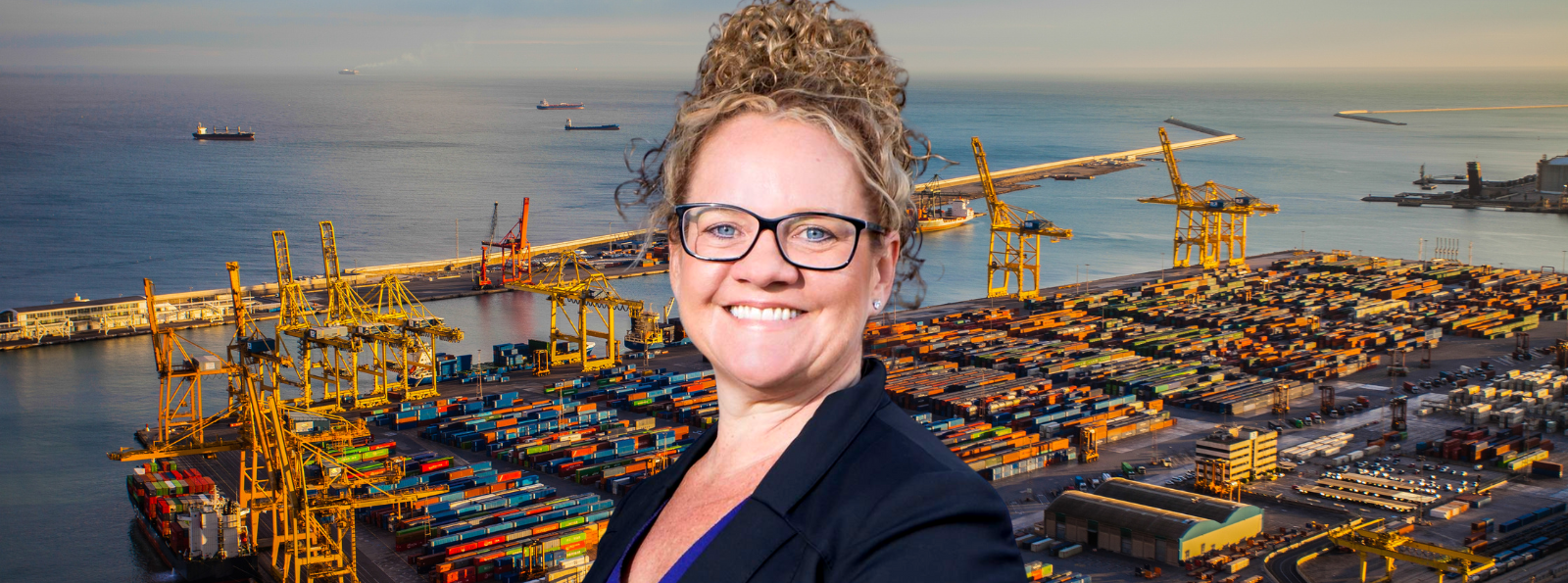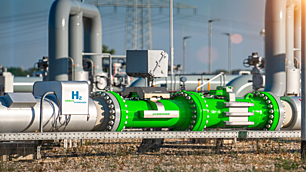This could be the investment theme of the decade
If I told you infrastructure could be the investment of the decade, would you believe me? Infrastructure is often the forgotten asset, maligned as a bond proxy or even seen as boring. Take a closer look though and you might be surprised at how wrong this view really is. Infrastructure has it all - an exciting story, predictable income, and flexibility for market cycles. Better yet, the market hasn’t truly cottoned on to its power.
There are many good reasons that Sarah Shaw, Global Portfolio Manager and CEO/CIO for 4D Infrastructure is passionate about this asset class. In fact, she argues it has all the essential characteristics to be the investment of the decade. It’s a big call but one Shaw backs wholeheartedly.
“Being an accountant, I like the strong predictability and visibility of earnings. As an individual and an investor, I just love the thematics that underpin it. The big growth drivers. It also has the ability to position for all points of an economic cycle,” she says.
Shaw knows the infrastructure space inside out, having worked in it for close to 25 years across a range of businesses and portfolios. She manages the 4D Global Infrastructure Fund (unhedged), the 4D Global Infrastructure Fund (hedged) and the 4D Emerging Markets Infrastructure Fund.
.png)
Given her background, when Shaw says there are lots to be excited about in infrastructure and the market is missing it, it pays to listen.
Unique characteristics and big themes
Infrastructure is a highly diverse space. Think airports and toll roads on one hand, energy suppliers, communication towers and water treatment plants on the other.
There are however two characteristics shared by all infrastructure assets that Shaw argues are particularly attractive in this environment.
“One is that earnings are underpinned by contract or regulation and two is they have explicit or implicit inflation hedges within their business models,” she says.
These qualities are defensive, and Shaw believes the market has missed these underlying characteristics of infrastructure in the noise about high energy prices, affordability and recession.
There are also a number of major trends for this year and the future that are dependent on the infrastructure space for success.
“One trend we’re looking at is reopening. While the rest of the world reopened last year, China has reopened this year. We’ve got 1.4 billion people who were locked up for three years. Another trend is population growth, largely driven by the emerging world which supports a different growth environment, and a big trend is the emergence of the middle-class. Finally, there’s the energy transition which is a fundamental driver of investment out to 2050,” says Shaw.
In saying that, Shaw believes investing in long-term trends doesn’t negate the need to actively adjust to shorter-term macro activity and cyclical events. It’s a matter of balancing both to maximise your opportunity set and returns.
She notes that a significant portion of the infrastructure space is ideally suited to the current economic environment.
For example, she points to user-pay assets (e.g. toll roads, airports, rail) which are highly correlated to economic activity and have explicit inflation hedges which can be compounded into future valuations. By contrast the utility space or essential services are generally what Shaw calls “economically immune” and therefore well suited for portfolios in the case we do have a recession.
“That’s a function of them being a basic need. The last thing you’ll do in tough conditions is turn off your lights or water. They are a last resort in terms of affordability. Also, the structure of their regulatory environment measures returns independent of volumes,” says Shaw.
Weighting infrastructure in the current environment
Shaw notes 4D Infrastructure was early in reweighting their portfolio in expectation of rising inflation and interest rates but that has also meant they are well-positioned for the current year and also able to seek out further opportunities.
Her investment process incorporates an evaluation of regions and countries first, then identifying high-quality and value stock opportunities within those countries identified as offering long-term growth and quality. In the current environment, this has resulted in certain regional overweights, as well as certain sector preferences.
“We are overweight Europe because the value proposition is extremely attractive for high quality names. We are overweight emerging markets for the same reason as well as to access the domestic demand story. We are overweight user-pays assets where we can capture inflation and the reopening trend. We are overweight real-rate utilities and those capitalising on the energy transition while being underweight to nominal rate utilities despite some of these being high-quality,” says Shaw.
She also says there is an overweight exposure in the portfolio towards the emerging middle class along with the energy transition. Both megatrends will require substantial infrastructure spending to support activity for decades.
Europe is offering the biggest opportunity set
Those who have watched the energy challenges in Europe over the past year are unlikely to be surprised that Europe features on Shaw’s opportunity set. Shaw says it is broader than energy, and in fact, Europe by far outranks traditional equity investor favourite US when it comes to quality value opportunities.
“The European market is incredibly diverse from an infrastructure investor standpoint. They have very high-quality user-pay assets and utility companies. By contrast, there are very limited user-pay assets in North America. They don’t have the same ability to capture different global dynamics,” Shaw says.
She notes there is diversity even within subsectors. For example, Groupe ADP (EPA: ADP) is highly correlated to China's reopening whereas Fraport (ETR: FRA) has some exposure to China but already benefitted from the reopening of continental Europe last year.
Perhaps the most significant opportunity Shaw sees in Europe comes from the value disconnect. Some European companies have been trading on cheaper multiples than even emerging market peers. US companies by contrast were at a premium.
“We think the noise around Ukraine, the energy crisis, affordability and inflation has created such an extreme buying opportunity that we are looking to capture that over the investment cycle by buying now,” says Shaw.
The biggest conviction play for 4D Infrastructure
Ask Shaw for her biggest conviction position and the answer might surprise you.
“I like to talk to the highest conviction themes rather than the highest conviction stock,” she says.
So Shaw’s highest conviction themes? The energy transition and the emergence of the middle class, which are both driving huge infrastructure demand and growth.
Energy remains particularly topical in 2023
The energy transition.
Some of the top portfolio positions correspondingly reflect this theme. For example, Spanish multi-national integrated electric utility company Iberdrola (BME: IBE) is a leading provider of renewable power while Italian multi-national electricity and gas supplier Enel S.p.A (BIT: ENEL) started out with hydroelectricity and has continued to innovate in renewable and clean energy forms. However, they are not just generators; they are also strong investors in the poles and wires needed to connect green energy and firm up networks, a part of the story Shaw finds particularly attractive as the investment earns a regulated return.
As Shaw points out, this is not about excluding older forms of energy – we need to be conscious of the security of supply. It’s about investing in what’s needed now along with the future direction to capitalise on global investment.
After all, there’s no question global governments are investing heavily in the transition out of necessity. The supply issues stemming from the Russian invasion of Ukraine put this into sharp focus, highlighting the need for countries to find a degree of self-sufficiency through renewables, interconnections and strengthening their grids. .
Shaw’s portfolio has taken a diverse approach to the green transition, looking across the supply chain and infrastructure required over the coming decades. Net zero requires further technological improvements such as advances in green hydrogen . You can read more about this in Shaw’s recent article for Livewire.
.jpeg)
A final word on infrastructure
If Shaw wants investors to understand anything about infrastructure, it’s the huge potential ahead and the ability for it to be relevant and valuable in anyone’s investment portfolio. She thinks the market is overlooking it at the moment – but it will catch up.
“I think it’s the investment of the decade. That’s due to the combination of its defensive characteristics, the trends driving huge growth and the ability to actively position to weather economic cycles. Over an investment cycle, infrastructure will not fail you where you’ve focused on quality because the fundamental earnings profile and value is there. The market will ultimately recognise this as sentiment eases,” Shaw says.
You can find out more about 4D Infrastructure’s investment approach and the 4D Global Infrastructure Fund below:

5 topics
2 funds mentioned
1 contributor mentioned


